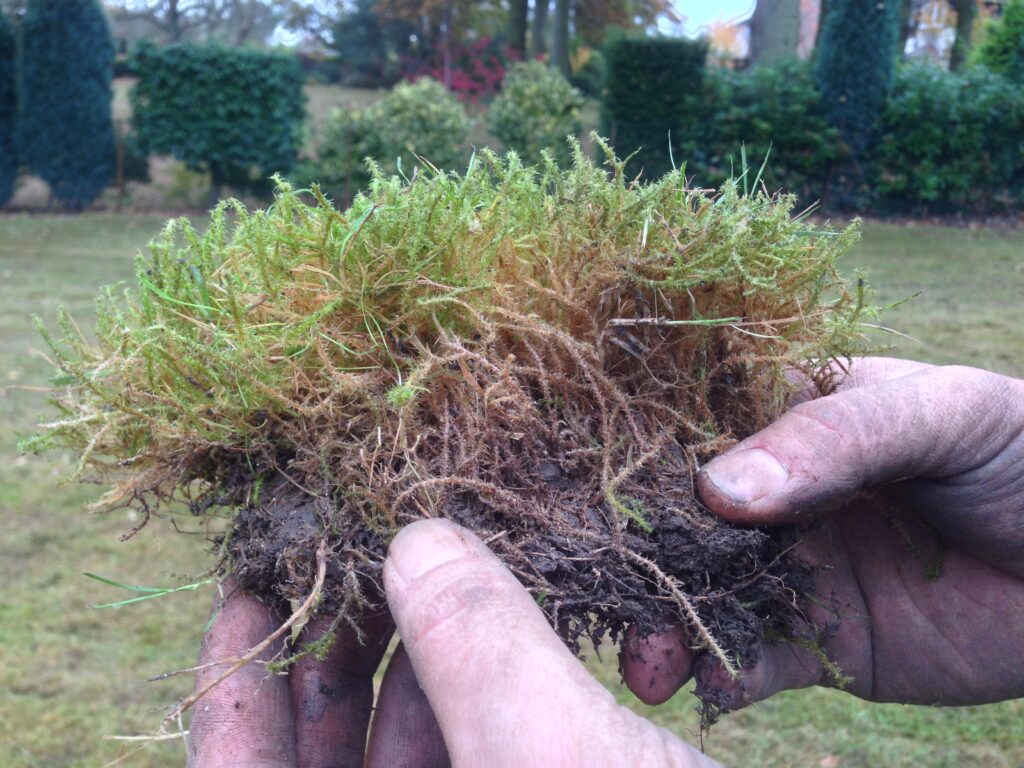

What is moss?
Moss is a small, non-flowering plant that belongs to the bryophyte group. It thrives in damp, shady environments and spreads across surfaces like soil, rocks, and trees, forming a soft, green carpet-like layer. Unlike regular plants, moss lacks true roots, stems, and flowers. Instead, it absorbs water and nutrients directly through its tiny leaves.
Key Characteristics of Moss:
No roots – It has tiny structures called rhizoids that help anchor it to surfaces but don’t absorb nutrients.
Reproduces via spores – Instead of seeds, moss releases spores from capsules.
Prefers moisture – It thrives in damp and shaded conditions.
Grows in clumps – It spreads by forming dense mats over soil, rocks, trees, or even lawns.
Is Moss Good or Bad?
It depends on where it grows!
Good in nature – Moss plays a crucial role in ecosystems by preventing soil erosion and retaining moisture.
Bad for lawns – It can take over grass, especially in compacted, shaded, or poorly drained areas.
In lawn care, moss is often a sign of underlying issues like poor drainage, low nutrients, or too much shade. That’s why your autumn lawn treatments (scarification, aeration, overseeding etc.) are so effective—they help reduce moss by improving lawn conditions!
Where does it come from?
Moss reproduces through spores, which are like tiny seeds. Domestic lawns often have a layer of thatch. Thatch offers a perfect environment for these spores to grow and for the plant to flourish.
Why is moss a problem?
Just like weeds, moss can be very unsightly in a lawn. Moss grows mostly in the colder months during autumn and winter. During this time, the grass plants are weak. This gives moss the opportunity to grow vigorously and crowd out the grass plants.
By the time the weather warms up again in the spring, moss can easily have taken over an entire lawn, leaving only a small number of grass plants visible. As temperatures increase and the weather turns dry, the moss will dry out. Unfortunately, this only creates a perfect layer of thatch for next year’s moss to grow into.
How does Green Man control moss?
There are several methods available for controlling moss. In both our Autumn and Winter Treatments, we apply a moss control. However, this really is a short-term fix. The best method is to reduce the home of moss—thatch. This can be achieved by carrying out our Green Man Booster Treatments, the most common being Scarification and Aeration.
Can Green Man Lawn Care rid my lawn of moss completely?
Moss is the UK’s biggest lawn problem and controlling it can be quite difficult. Just like any physical lawn problem, it is more a case of managing and controlling it, rather than aiming to eradicate it completely.
Moss control treatments on lawns will only control the moss that is present on the lawn at the time of application. As part of our seasonal treatment plan, a moss control treatment is applied in autumn and winter. All growing environments are different, and it is common for moss to grow through spring if conditions are favourable. For this reason, a moss control can also be added in to your Spring treatment (this incurs an additional cost).
